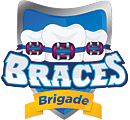 Dr. Terrence Wenger
Dr. Terrence Wenger has made numerous contributions to the field of orthodontics since beginning practice in 1969. He is past president of the Cleveland Society of Orthodontics, the Alumni Association of Case Western Reserve University, and most recently the United Dental Tennis Association. In 1995 he was elected into the International College of Dentists reserved for doctors who demonstrate a commitment to their profession and their community. His honors include being named as the leading orthodontist in Northeastern Ohio in a survey voted on by dentists and dental Hygienists, published by the Northern Ohio Live Magazine in 2003.
Dr. Wenger completed his undergraduate degree at Western Reserve University in 1962 where he earned the Willaman Award as the outstanding senior athlete. He played professional baseball for the Cleveland Indians for two years before entering Case Western University Dental School in 1963. During dental school he was class president all four years, graduating in 1967. He was elected into the Omicron Kappa Upsilon honorary fraternity, reserved for the top ten percent of each class. At graduation he earned the Callahan Award given to the doctor who demonstrated the best clinical and leadership skills. Dr. Wenger remained at CWRU to complete his post graduate residency and earned his Master’s degree in 1969. His Master’s thesis compared two different types of retainers and their stability of overbite correction.
Dr. Wenger and his wife Judy have been married since 1963 and have three grown children and four grandsons. His hobbies include tennis, fly fishing, collecting sports memorabilia, gardening, and playing with his grandchildren. Dr. Wenger is an active member of the Chesterland Rotary and a member at St. Anselm Parish.
Dr. Ryan T. Wenger has practiced orthodontics with his father, Dr. Terrence L. Wenger, since 1998. Dr. Ryan received a Bachelor of Science degree from the University of Notre Dame in 1991 and his D.D.S. from The Ohio State University School of Dentistry in 1996. In dental school, Dr. Ryan conducted extensive research on facial growth and treatment efficiency, earning the student clinician’s award in 1996. This honor allowed Dr Ryan to represent The Ohio State University at the American Dental Association national meeting. Dr. Ryan continued his education by specializing in Orthodontics at the Case Western Reserve University. His research at CWRU investigated the clinical results of protraction headgear to correct underbites and won the resident’s research award.
Dr. Ryan has volunteered at Case Western Reserve University as an assistant clinical professor of orthodontics since 2003. He trains orthodontic residents in the latest innovations through lectures and supervision of patient care. Dr Ryan achieved board certification from the American Board of Orthodontics in 2007.
Dr. Ryan enjoys spending time with his wife and three sons. He is also an avid tennis player, having lettered four years at the University of Notre Dame. Upon graduation from Notre Dame, Dr. Ryan received the Bryon Kanely award for outstanding academic and athletic achievement. Dr. Ryan’s other interests include running, basketball and billiards.
Dr. Reid is a native of Novelty, Ohio and graduated from University School in 1992. He received his Bachelor of Science degree from Lynchburg College in Virginia, where he graduated With Honors in 1996. He obtained his DDS from Case Western Reserve in 2002. After dental school, he completed a general practice residency at MetroHealth Medical Center in 2004. He undertook one year of post graduate research at Case Western Reserve School of Medicine, concentrating on tissue engineering to develop human cartilage implants. The work, titled "Hydrostatic Pressure Increases Apoptosis In Cartilage-constructs Produced From Human Osteoarthritic Chondrocytes," was published in the journal Frontiers In Bioscience.
Dr. Reid earned his MSD in Orthodontics from Case Western Reserve in 2007 after completing a 30 month residency program and writing a research driven masters thesis. During his orthodontic residency, Dr. Reid received the prestigious “B. Holly Broadbent Award for Outstanding Research” for his thesis. He also shared the clinical award, given to the resident who excels in the clinical treatment of patients. He is also a Diplomate of the American Board of Orthodontics and is a Certified Invisalign Provider.
Dr. Reid enjoys golf, tennis, kayaking and fly fishing with his yellow lab, Bodhi. He and his wife, Anna, just welcomed their first son, Michael, in February, 2007.
 At Wenger Orthodontics, our patients want to get as much out of their treatment as possible. That includes asking a lot of questions and making sure they take care of both their appliances and oral health.
At Wenger Orthodontics, our patients want to get as much out of their treatment as possible. That includes asking a lot of questions and making sure they take care of both their appliances and oral health. 














































